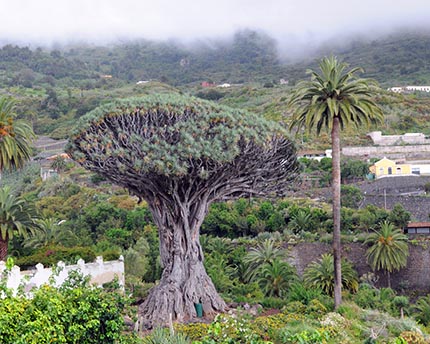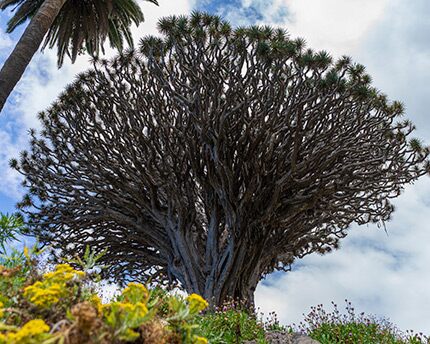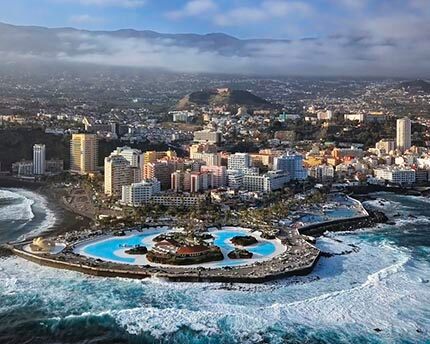Northern Tenerife
The island of Tenerife can be divided up in different ways according to what it has to offer tourists and its geographical position, even though logic tells us that when visiting Tenerife you must choose between staying close to the capital, exploring the tourist-oriented south, or opting for more rugged and striking landscapes in the north.
The north and northwest of Tenerife spans the area from Tacoronte to Buenavista del Norte, a space characterised predominantly by the presence of large natural areas and must-see views. One such view can be found at Las Cañadas del Teide National Park, a protected area occupying part of the municipality of La Orotava, which is home to Teide volcano, whose summit can be visited by cable car. In La Orotava Valley it’s also worth stopping in the eponymous town, which offers picturesque examples of Canary Islands architecture.
Of equal importance is Puerto de la Cruz, a municipality which, in addition to its ethnographic attractions and traditional architecture, offers the refreshing saltwater pools of Lago Martiánez and Loro Parque, a zoo for both land and marine life.
Keeping on the aforementioned strip, we also recommend acquainting yourself with the Casa de la Miel y el Vino [House of Honey and Wine], in the municipality of El Sauzal, and the Drago Milenario, a centuries-old dragon tree in Icod de los Vinos. A wealth of excellent architecture, scenery and restaurants can also be found in other municipalities in the area, such as Tacoronte, La Matanza de Ocentejo, La Victoria de Ocentejo, Santa Úrsula, Los Realejos, San Juan de la Rambla and La Guancha.
Descending inland towards the northwest we come to the area known as Isla Baja, which comprises the municipalities of Garachico, El Tanque, Los Silos and Buenavista del Norte. Here, nature is once again the star, inviting visitors to explore it in a leisurely manner so they can soak up the magic of its landscapes in places such as Teno Rural Park. Sport and hiking are a key part of any active holiday and can be combined with visits to charming towns such as Garachico. Not only does the town boast a historic quarter, declared an Asset of Cultural Interest, but it offers visitors magnificent natural pools known as El Caletón, which formed after a volcanic eruption in the eighteenth century and are one of the must-visit swimming areas in Tenerife.
The final municipality we come to before arriving in the south is Buenavista del Norte, which boasts a magnificent setting for fans of rural tourism. Amid gorges and ravines, lies the hamlet of Masca, one of the finest examples of traditional rural architecture in the Canary Islands, which was even declared an Ethnographic Site. The hard-to-reach place boasts spectacular scenery and traditions that have withstood the test of time thanks to limited contact with busier areas. Other hamlets of interest include El Palmar and Teno Alto. Just be sure to always have your camera on you so you can capture these special landscapes.
The north and northwest of Tenerife are an excellent option for travellers who long for a peaceful holiday based around culture and nature.
Nearby plans
Related plans

Qué ver en Icod de los Vinos: un árbol centenario y cientos de mariposas
Hay mucho que ver en Icod de los Vinos que, sin duda, es una de las localidades más atractivas del Norte de Tenerife.

El Drago Milenario, un viaje natural al pasado
El Drago Milenario de Icod de los Vinos, con más de 800 años de vida, es uno de los emblemas icónicos de las islas Canarias

Qué ver en Puerto de la Cruz
El lago Martiánez, la playa Jardín y su centro histórico hacen de Puerto de la Cruz uno de los enclaves más turísticos de Tenerife


